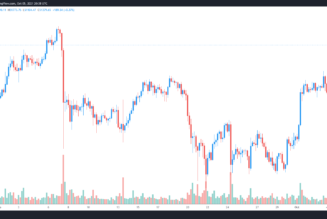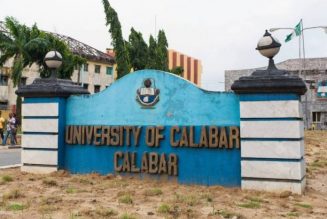
Grant Town has long had financial trouble.
The power plant has lost $117 million over the last five years, according to documents filed with the West Virginia Public Service Commission.
Herb Thompson, the plant’s manager of support services, acknowledged in a PSC filing in 2017 that the company had just enough money to pay its staff and cover the costs of fuel and operations. Its reserves were dry, and it couldn’t afford to shut down for maintenance or upgrades.
If Grant Town were forced to cut its greenhouse gas emissions because of new regulations, it would need $6 million to $10 million to upgrade its turbine, “which we simply can’t afford right now,” the official said.
Now, Grant Town wants to be bought out from its energy contract with Mon Power, a FirstEnergy Corp. subsidiary, so it can power the cryptocurrency mining that relies on high-powered computers, its owners revealed in a PSC filing last Friday. The PSC filing didn’t identify who would buy the power, but there’s growing demand among cryptocurrency miners for electricity.
Under the proposal, the plant envisions tapping another source of revenue by selling ash for the production of concrete.
There is precedent for buying out similar power contracts. In 2019, Mon Power paid $60 million to a coal-waste burning facility owned by Morgantown Energy Associates. That plant switched to burning natural gas, ending its use of gob and sharply cutting emissions.
Old mines, big piles
The fuel that Manchin’s family company Enersystems provides to Grant Town comes from giant mounds of waste coal piled up outside two shuttered mines. Both are close to Manchin’s hometown of Farmington. There’s the Barrackville refuse pile outside of Pleasant Valley and the Humphrey No. 7 mine site near Morgantown, public records show. Grant Town was the sole recipient of all the coal sold by Enersystems between 2008 and 2019, The Intercept reported.
Enersystems transports the low-quality fuel from those sites to Grant Town’s boilers, which turn a steam turbine generator. It’s labor intensive and dirty. Grant Town, which has about 50 full-time employees, burns about 500,000 tons of waste coal annually.
“Most of the costs of burning or using of waste fuel is not for the carbon content in the fuel. It’s really for all the high handling costs, the high processing costs, the ash disposal, the much higher ash content in the fuel and the ash disposal cost associated with that,” a consultant for the plant’s owner, American Bituminous Power Partners, testified in 2017. “There’s a lot of trucking, a lot of hauling, a lot of processing at the power plant site, blending different fuels to get a mix that you’ll see a boiler can burn.”
In 2020, almost all of the coal burned by Grant Town came from Enersystems, according to the most recent filings from the U.S. Energy Information Administration.
Manchin’s former chief of staff, Larry Puccio, has counted FirstEnergy as a lobbying client since at least 2017, according to West Virginia lobbying disclosures and first reported by Sludge. FirstEnergy is one of Manchin’s top donors, contributing $36,000 in the current election cycle so far, according to OpenSecrets.org.
Otherwise, Grant Town is fairly unremarkable.
It’s a relic of the 1970s-era Public Utility Regulatory Policies Act, which encouraged greater energy efficiency and broader promotion of domestic energy.
Coal operators found an inexpensive source of fuel nearby: The useless mix of mud, coal and shale that was dug out of mines and heaped into giant piles. Burning that waste was also an effective way of cleaning up former mines, by removing pollutants that would otherwise go into waterways. The ash from the burned gob was later spread on the same sites to absorb acid runoff.
Grant Town’s financial challenges are increasingly common; more and more coal plants across the country are retired every year. Plants in similar situations have pursued options such as shuttering the facility, converting it to natural gas, selling energy directly to consumers or powering Bitcoin mining.
American Bituminous Power Partners (AMBIT), the owner of Grant Town, has argued in PSC filings that continuing to operate under the power purchase agreement could drive up utility bills.
It’s not unusual for utilities and power plant owners to disagree over cost estimates. Experts say the fight between Grant Town and Mon Power, the FirstEnergy subsidiary, could be an ordinary contract squabble.
Grant Town has been teetering on the edge of bankruptcy for years. The plant is on pace to cost Mon Power’s customers almost $24 million next year, according to Public Service Commission filings.
In 2006, when Manchin was governor of West Virginia, state regulators helped save the plant by increasing its rate from $27.25 per megawatt to $34.25. Regulators also approved extending the power purchase agreement from 2028 to 2036. Puccio, then Manchin’s chief of staff, helped broker a deal with Mon Power to keep the plant operating, The Intercept reported.
‘Fight this battle’
Grant Town is the type of plant that many Democrats hope to shut down. It released more than 10 million tons of greenhouse gases between 2010 and 2019, according to EPA data.
Biden aims to reduce power-sector emissions 80 percent by 2030 and eliminate them five years later. Such a rapid transition stands to send shock waves through the nation’s coal industry.
Enersystems, which Manchin helped to incorporate in 1988, lists its business purpose as “surface & underground coal mining,” according to documents filed with the West Virginia secretary of state.
Grant Town says its plan to power cryptocurrency mining and reuse its ash for concrete production will help it cut carbon emissions.
“We will begin marketing the ash as a substitute for cement as a component in concrete, a great way to reduce greenhouse emissions,” Richard Halloran, president of Grant Town Holdings Corp., testified in a recent PSC hearing. “Although success in these and other potential businesses at Grant Town is uncertain, we will continue to invest in them to maximize our chances to stay in business for many years.”
If Mon Power does not buy out the contract, he noted, the plant will pursue a scaled-down version of the cryptocurrency mining plan, though it won’t be able to make the same upgrades and would be more vulnerable to future climate regulations.
“This will give us less protection against the anti-fossil fuel [coal] sentiment and legislation and taxation, but we will try to fight this battle as hard as possible,” Halloran said in the PSC testimony.
Ambit declined to comment.
For its part, Mon Power hasn’t explained why it refuses to buy out the contract.
“Mon Power carefully reviews financial opportunities such as contract buyouts and will continue to explore transactions that yield economic benefits for its ratepayers,” said FirstEnergy spokesperson Will Boye.
Separately, FirstEnergy paid a $230 million fine last year after admitting that it funded dark money groups at the center of an Ohio bribery scandal involving the Republican speaker of the state House. The lawmaker helped pass legislation that forced ratepayers to prop up money-losing nuclear plants.
Politics of coal power
A variety of considerations can go into a utility’s decisions around power purchase contracts, including grid reliability. Utility experts say it’s not unusual for plant owners and utilities to disagree over the cost of buyouts. Recent PSC filings show that the two sides are far apart on the price of dissolving the contract.
Experts suggested to E&E News that Ambit might want more money to be bought out of the contract than Mon Power is willing to pay.
Regulators sometimes take local considerations into account when weighing whether a power plant should remain operating, said Neil Chatterjee, a former chair of the Federal Energy Regulatory Commission.
“There are certain regions of the country where these plants support local communities, they’re big economic drivers, they support school systems, they employ a lot of people, there is a lot of direct employment, indirect employment. And so within those communities, there may be more of an effort to keep those plants operating, there may be a lot of sunk costs there,” he said.









